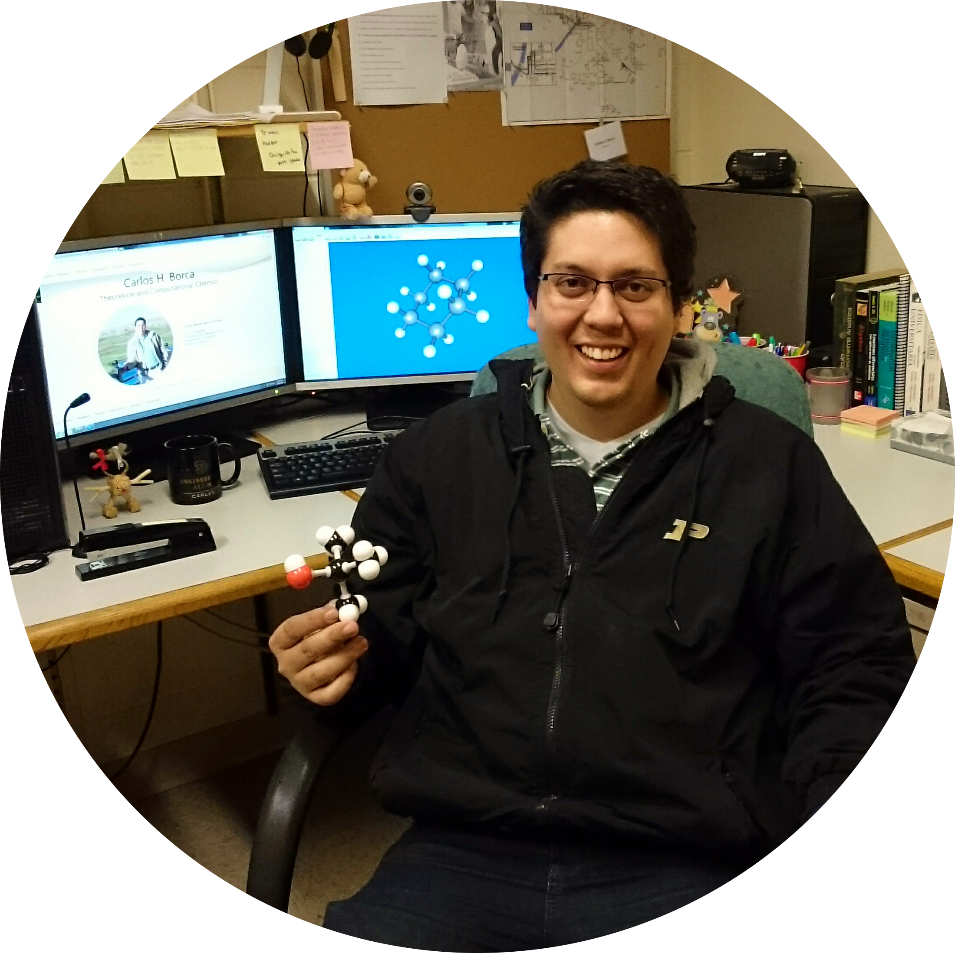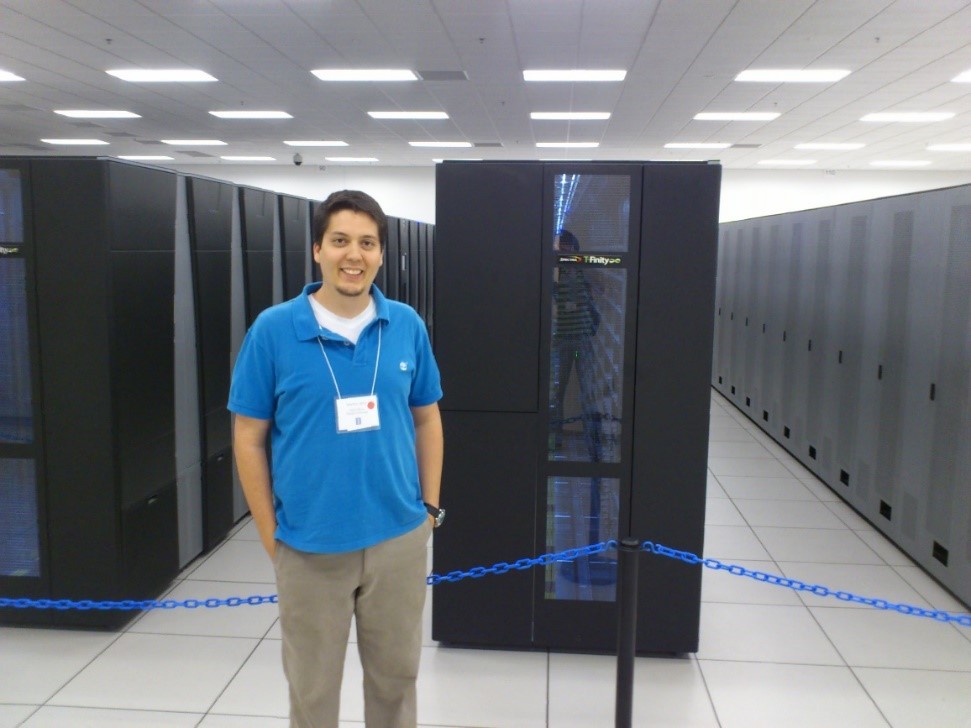
PhD in Chemistry, Purdue University
BSc in Chemistry, Universidad del Valle


PhD in Chemistry, Purdue University
BSc in Chemistry, Universidad del Valle
What was your research topic and how did you become interested in it?
I became interested in chemistry as a child when I understood that, much like LEGO building blocks, a variety of forms within the universe are created using the same blocks of matter. Later, during my undergraduate studies in Colombia, I started combining this interest with my passion for computation.
During my doctoral studies, I worked in theoretical and computational chemistry. Theoretical chemists develop mathematical methods to accurately describe the physics of matter at the atomistic scale, while computational chemists implement such methods into efficient computer programs. These programs are used by the scientific community to calculate structures and predict properties of molecules and solids.
A challenging problem in this field is the accurate modeling of molecules that approach closely enough to interact, but with energies low enough not establish chemical bonds between them. My doctoral research focused on how to approach intermolecular interactions from two different theoretical perspectives: The Effective Fragment Potential (EFP) method and Density Functional Theory (DFT). First, I worked on important problems in DFT, such as the accurate description of charge transfer, electronic dispersion, and molecular excited states, which are relevant in materials science, clean energy, and nanotechnology.
Then, I shifted my focus to the EFP method. Such method is a systematic approach to describing intermolecular interactions in a simplified way, and it is mainly applied to describe motion in condensed matter: liquids and solids. It is especially useful in modeling water in chemical reactions and processes involving aqueous solvents.
The project I enjoyed the most was exploring the thermodynamic equilibrium between liquid water and ice using the EFP method. Understanding the molecular behavior of water and ice is essential in hydrological models, used to study environmental phenomena like the accelerated melting of high-mountain glaciers in tropical regions. For example, the Colombian Institute of Hydrology, Meteorology and Environmental Studies (IDEAM) used hydrological models to estimate that 57% of Colombia’s ice has melted in the last three decades. With this project, I could see how what I was studying helped to address problems that affect the Colombian society.

Carlos had the opportunity to work in the Quantum Simulations Group at the Lawrence Livermore National Laboratory (LLNL), a research facility funded by the U.S. Departments of Defense and Energy that aims to understand the physics of the sun. The project he worked with develops computational methods to simulate materials under extreme conditions.
What were the most difficult and the most gratifying aspects of your studies?
For me, the hardest part was finding the right balance between scientific productivity and a good quality of life. Teaching general chemistry to undergraduates, attending classes, and doing research at the same time was hard. It was difficult to concentrate on my research while having to deal with other responsibilities at the same time. Once I finished my classes and became a research assistant, it was much easier to be productive.
I participated in Clubes de Ciencia 2015, which is an educational outreach initiative in which graduate students from around the globe design 1-week courses on their specialty. After a selection process, they go to their country and teach on-site to younger students. I had the fortune to teach a computational chemistry course in Puerto Triunfo, Antioquia. It was a truly rewarding experience and I keep contact with many of the people I met.
What are your plans after graduation?
I will work as a postdoctoral researcher in the Department of Chemistry and Biochemistry at the Georgia Institute of Technology, in Atlanta. Primarily, I will develop new computational methods, and implement them into computer programs.
Contact information:
Last modified: June 28, 2023